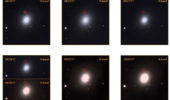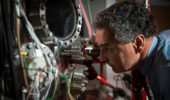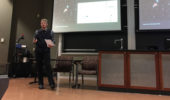Science Cafe | Black Holes: Fact and Fiction, March 6
Science Café presents Dr. Ryan Chornock discussing “Black Holes: Fact and Fiction” on Wednesday, March 6, at 5 p.m. in the Front Room at Baker University Center. Black holes are some of the most exotic objects in the universe. Their bizarre properties have been featured in numerous science fiction books and […]
Read more ›



















Comments